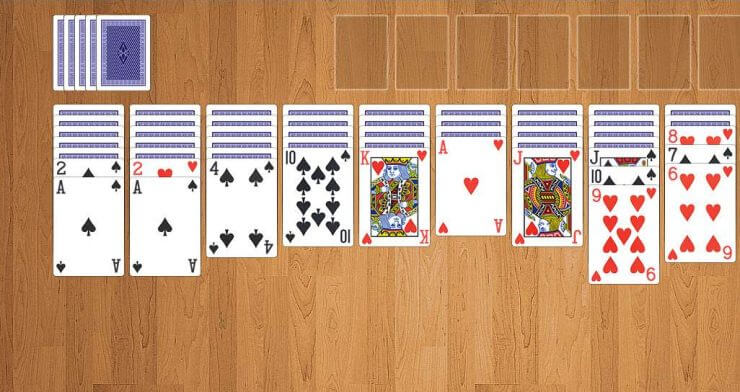One of the most popular variations of the classic game of Solitaire is called Spider Solitaire. This game has captivated players worldwide for decades because of its complex gameplay and strategic depth. We discuss the most difficult variation of Spider Solitaire, which is the four suits variant, along with a thorough explanation of the game’s guidelines and some tactical advice for playing it well. What is four-suit spider solitaire, and how is it played? Let’s find out.
What is Four-Suit Spider Solitaire?
A solitaire card game, Spider Solitaire 4 Suits, employs two full decks, or 104 cards. Because a player must construct eight discard heaps that resemble spider legs, the game is called “Spider.” The “4 suits” element alludes to the use of all four playing card suits: hearts, diamonds, clubs, and spades.
Due to the additional obstacle of sorting all four suits, this Spider Solitaire variation is the most intricate and challenging. Before moving on to the 4-suit version, beginners frequently begin with the 1-suit or 2-suit versions to grasp the game’s fundamentals.
Rules of Spider Solitaire 4 Suits
At first, the Spider Solitaire 4 Suits rules may appear complex, but with practice, they become easier. The rules are summarized as follows:
Setup: Combine the two decks of cards in a shuffle. On the tableau, distribute 54 cards among ten piles, with the first four piles containing six cards each and the remaining five cards each. Each pile receives a face-up card at the top and a face-down card at the bottom.
The game’s goal is to arrange the cards in each suit in descending order, from King to Ace. When a stack of Kings through Aces is finished, it is removed from the tableau. When all cards have been eliminated in this manner, the game is over.
Moves: Each pile’s top card may only be moved. Regardless of the suit, it can be positioned on a card that is the following rank down. The same suit and a set of cards in ascending order may be moved as a single unit.
Dealing: Click the deck to deal another row of 10 cards onto the tableau piles once all available moves have been made. This can be accomplished only when every tableau pile has at least one card.
Empty piles: Any card or sequence may be transferred to an empty pile.
How to play four-suit spider solitaire
Start the game: Start by scanning the tableau for any movements. To show a face-down card, this can entail moving a group of cards or a sequence of cards from the same suit onto another pile.
Creating spaces: Empty heaps offer greater flexibility for shifting sequences, so prioritize them. Creating space is essential for arranging the tableau because a King can only be moved into an empty pile.
Build by suits: Make every effort to arrange stacks according to suits. It can be tempting to stack cards in descending order without taking suits into account, but this could cause issues in the future. Try to arrange the sequences according to the same suit for easy management.
Deal smartly: When no more moves are left, deal more cards from the deck. Remember that you cannot deal if any tableau pile is empty; therefore, fill in any empty spots before dealing with a card or sequence.
Plan: Always consider your next step before you take the next. Delaying the relocation of a sequence could be advantageous to preserve choices for the future.





Be First to Comment